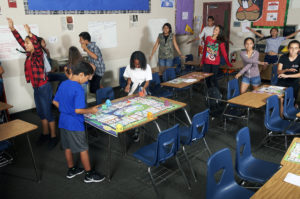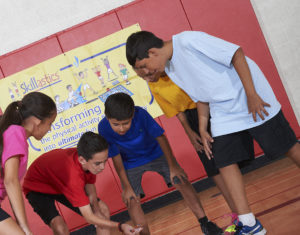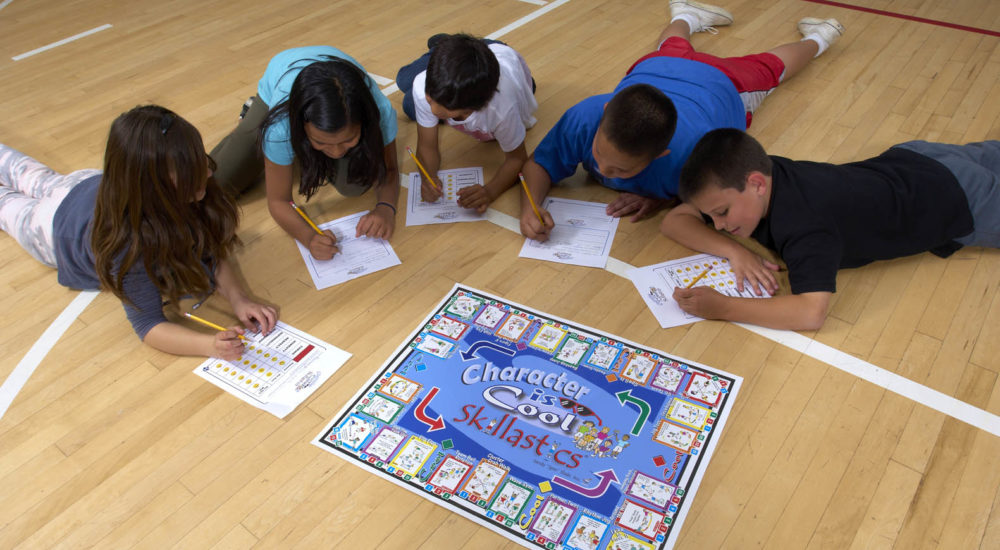We may not be able to gather in groups right now, but we can make the best of a difficult situation by planning for the day when we can resume our regular activities. While we have this time outside of the usual routine, we can use it to learn new ideas that will come in handy later. As the saying goes, when life hands you lemons, make lemonade. We can use this time to our advantage, so we return even stronger and better prepared.
Making Lemonade
This is an excellent time to practice what you teach. It’s easy to fall into a lull and become inactive without our routines to keep us going, so you may want to take time and reflect on this process to help relate to children who feel similarly. Children who have been without regular exercise for some time may resist movement that pushes them out of their “lull,” their comfort zone. How do you inspire someone to move more when they are resistant or in the habit of staying comfortable? How do you motivate yourself to get up and keep going?
When we’re in the middle of our daily routine, it’s hard to stop and think about these questions. With the slower pace we find ourselves in today, it can be helpful to be reflective and consider new ways to do things. What has worked in the past? What are you looking forward to trying out?
It is vital to keep going, to keep moving. The more we move, the more energy we create, which allows us to be productive. When we move our bodies, the extra blood flow to our brains and the work our muscles do gives us a boost, and we can get more done. Overall, we feel better and more motivated. Our students do, too.
Activity Improves Learning
 This motivational boost from exercise and fitness makes movement a crucial part of the learning process. With regular movement, children are energized to face the day. Exercise affects a child’s body by influencing sharper thinking and higher frustration tolerances for challenging work. Their bodies are better equipped to manage the stress of learning.
This motivational boost from exercise and fitness makes movement a crucial part of the learning process. With regular movement, children are energized to face the day. Exercise affects a child’s body by influencing sharper thinking and higher frustration tolerances for challenging work. Their bodies are better equipped to manage the stress of learning.
In addition to the effects on their body, exercise makes it easier for children to concentrate. Higher levels of brain chemicals released during exercise improve the brain’s ability to retain information. Memory is improved, and new information is absorbed faster.
As retention is a significant performance indicator for academic success, the ability for exercise to help students absorb and apply knowledge better makes it a vital component to students’ academic progress. If kids’ brains experience activity and perform better in school, then we must create more movement opportunities to help them develop.
The Value of Physical Activity
For those children without options to move or ways to be active, we need to create opportunities or provide access. The more we expose kids to physical activity, the more they will stay engaged, ideally seeking exercise activities on their own. As they engage in movement activities, kids will begin to understand their bodies and movements, further developing their awareness of their bodies.
Through kinesthetics, the study of body motion, and one’s own ability to move, children can begin to develop this awareness. Classes like Physical Education or after school programs engaging in physical activities are good ways to build children’s perception of their bodies and how they move.
The goal of developing awareness is to give children an appreciation for their ability to move as well as the importance of exercising. When children learn about the way their bodies react to movement, they will be more likely to engage in physical activity on their own.
For children who don’t readily exercise or have not been exposed to the fundamentals of movement and exercise, they don’t develop the concept of movement in quite the same way. For all children, it is more important than ever to include kinesthetics into their curricula so that they can learn the value of movement and how they can be active.
Building Kinesthetics Programs
 Creating programs that reach kids and help them develop their physical ability requires engagement and variety so that all children can participate and gain these essential skills. Program plans can build confidence and foster a love for exercise by focusing on skill development and fun activities.
Creating programs that reach kids and help them develop their physical ability requires engagement and variety so that all children can participate and gain these essential skills. Program plans can build confidence and foster a love for exercise by focusing on skill development and fun activities.
As you plan, remember that the objective is to introduce movement, build body awareness, and scaffold to more advanced skills over time. Break down broad concepts into smaller parts that can become games. Repetition builds muscle memory, so look for ways to repeat the skills but with new techniques; think, “same rules, different game.”
As children interact more with movement, they can begin to experience the positive effects of exercise. They learn better. This is the higher purpose of kinesthetics. While life is interrupted in this way, it can be challenging to focus on the future when the present is so uncertain. However, there is hope to be found in plans for the future, so use this time to look ahead. What can you build when everyone comes back together?
For breakfast, I had oatmeal and yogurt.
Author: @sandyspin
